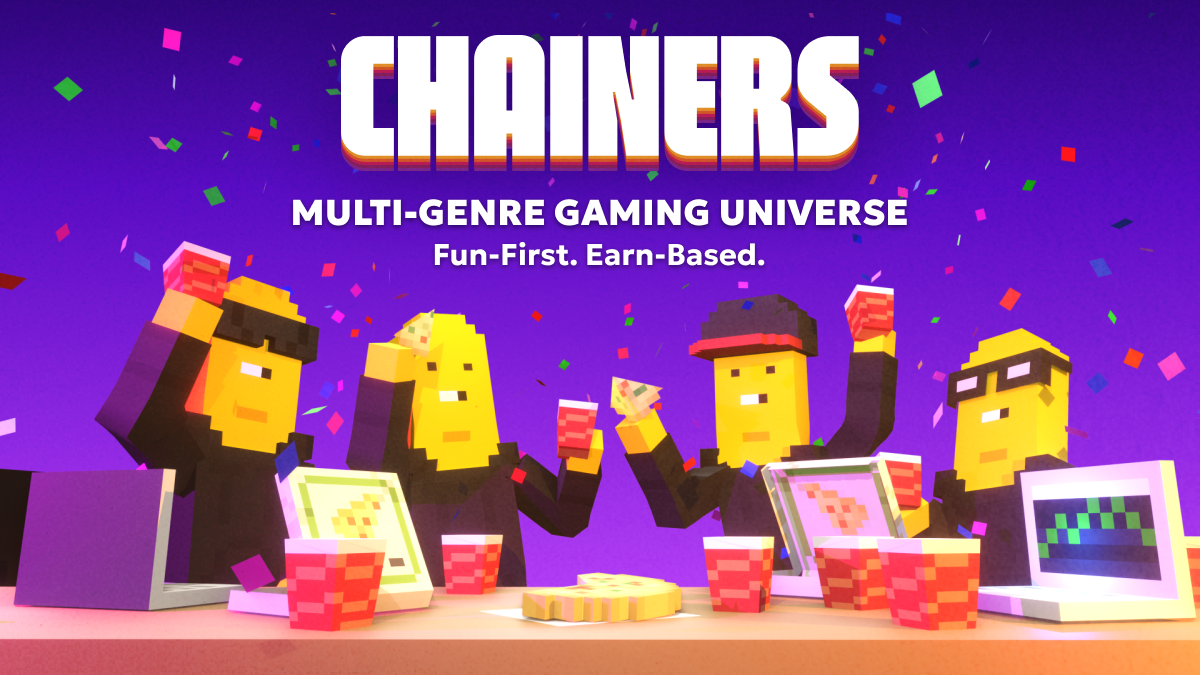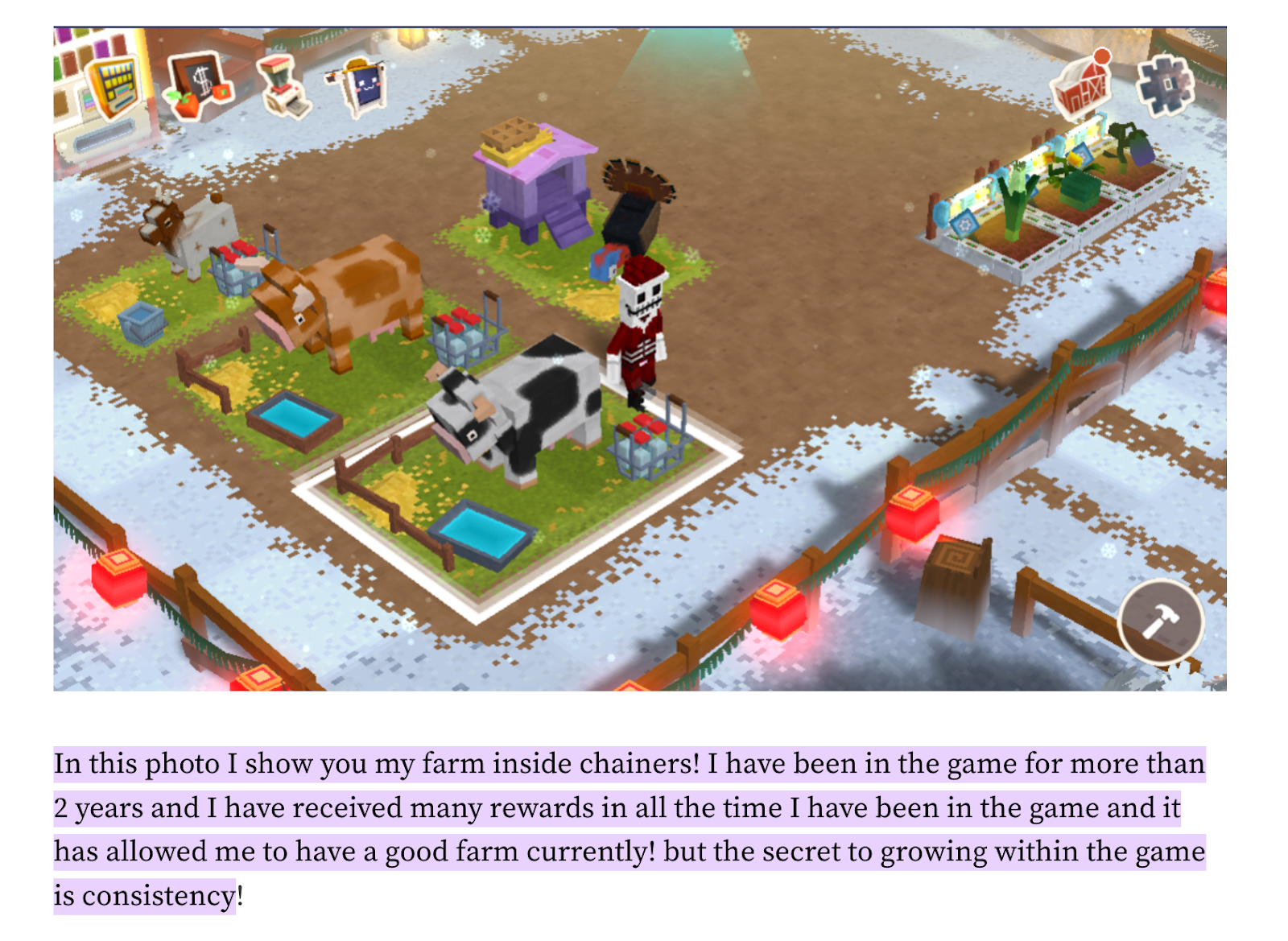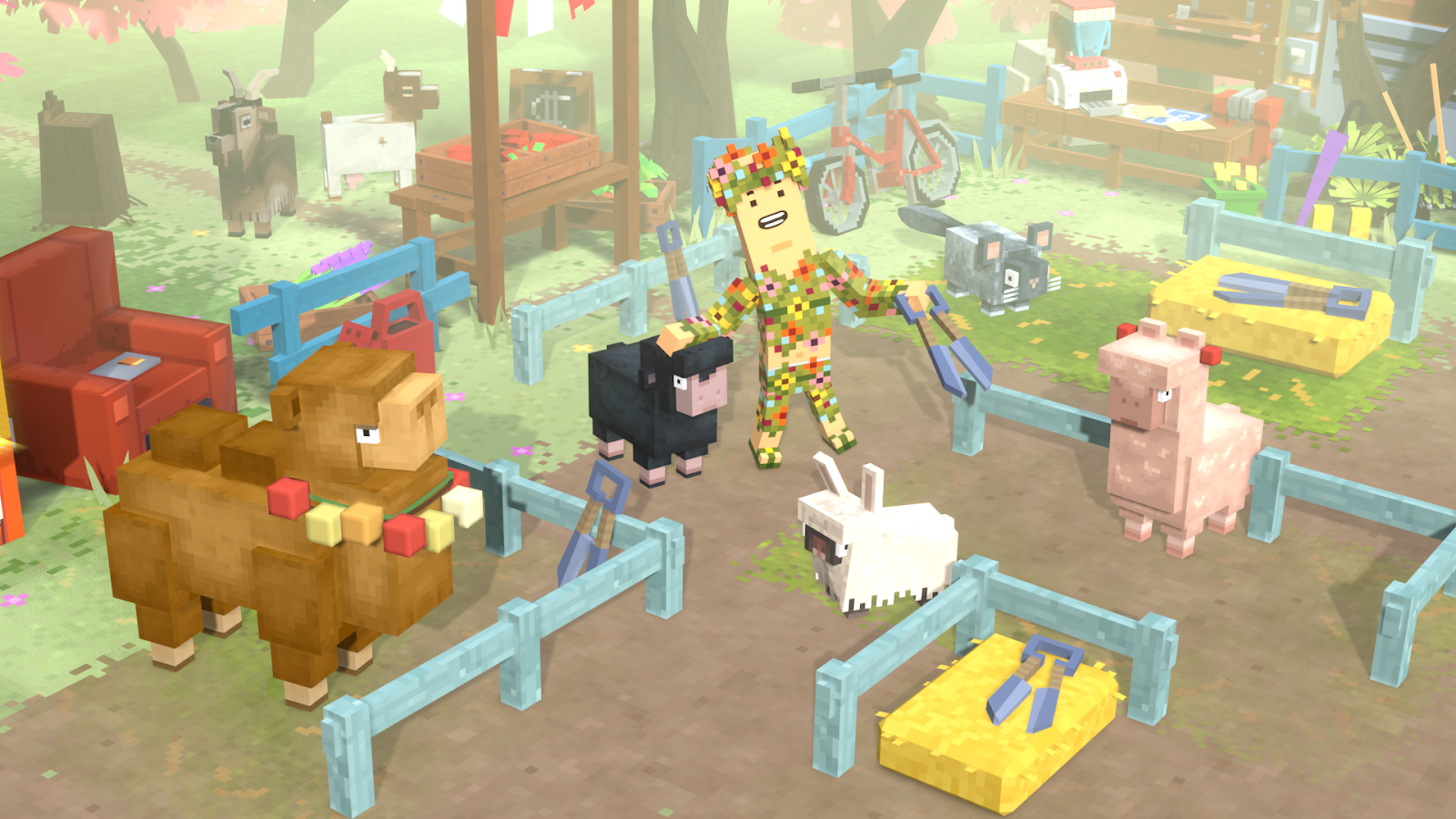
For a long time, Web3 gaming has created a lot of excitement, but the issues are now hard to ignore. Play-to-Earn (P2E) has turned into repetitive tasks and low profits. Most games can’t hold player attention and their economies break down. As of June 2024, just 257 out of 3,289 blockchain games had more than 1,000 monthly on-chain users, that's only 7.8%. By Q1 2025, the situation hadn’t improved significantly. According to DappRadar, the number of daily unique active wallets (dUAW) in blockchain gaming dropped by 6% compared to the previous quarter, reaching 5.8 million. This downward trend continued into April 2025, when dUAW fell further to just 4.8 million, the lowest monthly figure recorded.
This statistics points to a shift from "Play-to-Earn" models toward "Play-and-Own," where players value true ownership of in-game assets and a deeper, more engaging gameplay experience. It's now clear that the Web3 P2E community wants more than just wallets and tokens. They want worlds worth exploring.
Today, let's take a look at Chainers. This is not a typical game that attempts to fix old systems. It is a whole universe built on creativity, community, and gameplay. Here, ownership means self-expression, and players are responsible for the world's development. Is this what the future of Web3 gaming is really all about? Let’s take a closer look.
Where Web3 Gaming Went Wrong
Most Web3 games put profits before play. For example, Axie Infinity and CryptoBlades became very popular in 2021, but users left in large numbers after the financial benefits dried up. The idea of “play and earn” soon became “click and extract”. These models depend on a constant influx of new users. As a result, growth stalls, the economy breaks, players are left with worthless tokens and developers lose their communities. Adding traditional Web2 features like leaderboards, daily rewards, or NFTs hasn’t fixed anything. People no longer log in out of curiosity. They do it because they feel they have to. There’s no evolving world, no story, no reason to stay beyond chasing prices. Moreover, developers are in the same situation. They are working under old economic ideas, trying to manage both earning and playing the game, without knowing how to do it.
Meanwhile, the conversation in Web3 is still focused on minting, staking, burning, and liquidity. On paper, blending DeFi mechanics with gaming sounds like a breakthrough, but in practice, it's incredibly hard to build a model that appeals to players who want both meaningful gameplay and potential earnings. Earnings don't matter if the experience is boring. If profit is the only goal, users can just go straight to a DeFi protocol. They don’t need to click through a weak game to get there. So how can Web3 games actually appeal to modern players, who have high standards and endless options? How does an emerging project find its niche?
The Chainers Breakthrough
The idea for Chainers came from the realization that Web3 games failed not because of technology, but because they forgot what makes games INTERESTING in the first place. One of its core principles is ownership with purpose. NFTs in Chainers aren't static assets. They're tools for self-expression. Players can design outfits, build on their land, and create assets others can use. The voxel editor lets users craft items that can be minted, traded, and used in-game.
Another key is fair progression. Unlike Pay-to-Win models, Chainers rewards skill, contribution, and community engagement . Аll enhanced by unique player strategies that remain rewarding thanks to continuous updates to the game. Players can farm, craft, customize, explore, and even govern. The world responds to its community. Seasons shift, new stories unfold, and collaborative events keep the experience alive. The game doesn’t just deliver value, it gives players a voice in how the world evolves. In early access, the community exploded with activity. Players created thousands of NFTs, joined creative contests, and engaged in daily missions. Retention was significantly higher than most Web3 projects, and growth came not from speculation, but from… interest.
Of course, building something truly different is no small feat. Striking the right balance between user-generated content and a cohesive game world took real effort. Designing sustainable tokenomics without falling into the trap of inflation wasn’t easy. Even onboarding had to be reimagined, making Web3 feel invisible to newcomers, while still giving power users full control. And yet, against the odds, they pulled it off. They’ve managed to do what many others couldn’t and they’re not slowing down. The team remains committed to building a bigger, bolder universe, one designed to meet the needs of modern players and exceed expectations with endless possibilities and updates still ahead.
Inside the Chainers Universe
First of all, Chainers is a MMO (Мassively Мultiplayer Оnline) gamewhere players control their own land and expand it by growing, building, and connecting. However, it’s not just about planting something and waiting.
Every player starts with their own plot of land. Each territory belongs to a specific biome. Some crops thrive better in certain biomes, giving you an edge if you plant smart. When it’s time to sow, you choose seeds based on both type and rarity. You might plant sweet potatoes, ginger, spinach, or even onions, but what really makes the difference is their rarity, from common all the way up to legendary. The rarer the seed, the more biopoints it carries, and biopoints directly impact how valuable your harvest is when sent to the reward pool. But that’s only part of the strategy. The time of year, the pairing of crops, and even how you manage fertilization can boost your results.
Farming here is a whole system. The more you engage with it, the more it rewards you. To take your farming and earnings a step further, you can even use special farm devices that automate planting and harvesting, install phytolamps to speed up your crop growth, and raise productive animals like cows, chickens, and buffaloes for even sweeter gains and deeper gameplay.
One player shared:

Source: HiveBlog
Creating with Purpose
The game has a growing crafting system. Currently, players can create clothes and other wearable items, while future updates will expand crafting to include décor, tools, and furniture. The editor lets anyone create assets, turn them into NFTs, and use or trade them in-game. So, It’s mostly about building, sharing, and evolving. Customization isn’t just visual, players can adjust speed, stamina, and other traits that affect how they play. Everything created or earned becomes part of a lasting inventory. A Reddit user from the ConeHeads community wrote:

Source: Reddit
Social Play and Player Governance
In this game, cities and capitals are social hubs. Players vote, suggest changes, and run missions together. Events also are community-driven. In 2025, the game added new biomes, plants, and animals based on player feedback. Farming guilds brought in purple carrots and metal plots. Camels and wool-producing sheep followed.

Source: Chainers
Gamifying Consistency
Daily, weekly and monthly missions, alongside daily log-in rewards, give an edge to players who grind and play consistently. Mini-game “Chainers Dreams” offers fast-paced PVE shooting action set in a dreamlike environment and brings skill-based challenges tied to $FRI, NFTs, and other in-game items. Leaderboards reward both casual and competitive players.
Tech That Enables Play
Chainers runs on a system where everyday actions like farming, exploring, and customizing happen off-chain to keep gameplay fast and smooth. But when it really matters crafting rare gear, minting NFTs, or trading, those actions are recorded on-chain to ensure transparency and verifiable ownership.
The voxel editor is built directly into the game. Players can design items from scratch and mint them as NFTs in just minutes. No external tools, wallets, or coding required, making creation seamless and accessible to all players.
Rewards in Chainers are based on participation, not spending. The more consistently you play, the more you unlock, whether it's new recipes, missions, or bonuses. This contribution-first logic helps avoid inflation and ensures that both free-to-play and Web3-native users have a level playing field.
The in-game economy is powered by multiple tokens, each with a clear purpose:
- $FRI is the soft currency used for basic actions like buying, selling, and upgrading.
- $CHU/$CFB is the main hard currency that drives deeper gameplay interactions. Players will be able to withdraw or deposit it using a Web3 wallet, and $CFB will be convertible into $CHU once it launches.
- External currencies (like $POL) are also used for certain in-game actions, such as acquiring NFTs and loot, and can be earned through reward pools. These currencies are withdrawable and can be cashed out to any compatible Web3 wallet.
Reshaping the Landscape: Chainers' Market Impact
Chainers is trying to redefine Web3 gaming by addressing longstanding challenges and by solving key Web3 design flaws in ownership, engagement, and player-driven systems. How? Let's take a closer look.
Addressing Market Needs
As we mentioned earlier, traditional Web3 games often prioritized financial incentives over gameplay, leading to unsustainable economies and disengaged players. Chainers shifts this narrative by solving persistent issues in ownership, engagement, and player-driven systems. As noted byCrypto.news: “Instead of focusing purely on earnings, Chainers offers a dynamic Web3 world with enjoyable P2E mechanics”. By putting gameplay first, Chainers avoids the boom-and-bust cycles seen in other popular projects.
Industry Reactions and Competitive Response
Chainers challenges outdated Web3 models by emphasizing sustainable engagement, social interaction, and creative contribution. “The Chainers universe is structured around interconnected gameplay elements that create a cohesive experience.” – Cointrust. Other Web3 projects have already begun incorporating similar principles. Pixels has shifted toward a circular in-game economy to reduce speculation, reflecting Chainers' focus on utility over hype.Big Time also is shifting to a Free-to-Play model with cosmetic NFTs.
Comparison with Web2 and Web3 Alternatives
The thing is that Web2 games offer polish but limit player ownership. Legacy Web3 games promise financial upside but rarely deliver engaging gameplay. Chainers offers a hybrid model. It merges the narrative depth and creative freedom of sandbox MMOs with decentralized systems. Players control the assets they craft, trade, and use with no pay-to-win mechanics and create a self-sustaining ecosystem driven by creativity and community.
Future Implications
With over 500,000 players in its first year and a thriving creator economy, Chainers is redefining what it means to “own” a game. AsCoinGape put it: “Chainers is not like your favorite, oh-so-boring NFT game. It is a rising star in the Web3 genre, wrapping up a bunch of amazing features.”
The Ripple Effect
Is Chainers really quietly rewriting the rules of how games are played, owned, and built?
Rethinking Ownership and Monetization
Chainers challenges core assumptions in both Web2 and Web3 gaming. First, it redefines ownership. Where traditional games lock players into closed ecosystems, Chainers gives full on-chain control. Players mint, trade, and permanently own everything they create or earn, shifting power from publisher to player.
Second, it disrupts monetization. Instead of subscriptions or loot boxes, Chainers uses a free-to-own model. NFTs are distributed freely, letting players engage and earn before spending. Its farming system ties rewards directly to in-game actions, not speculation.
Creativity and Player-Driven Economies
Chainers reimagines creativity as a core loop. With the built-in voxel editor, players design avatars, homes, wearables, and assets that are tradable and usable. This supports a real user-generated economy, where creators retain ownership and earn from their work. Governance is also community-first. Players propose ideas, vote on changes, and shape the game’s future. Instead of a traditional roadmap, where players are merely informed of what to expect next, Chainers utilizes a dynamic approach. Рlayer feedback and participation are crucial and central to how the project updates and evolves.
Traditional Industry Response
Legacy studios are watching. Ubisoft launched Quartz but paused after backlash. Steam banned blockchain games entirely, citing fraud risks. These reactions show the gap between innovation and acceptance, but Chainers is proving there’s a middle path that works. The Free-to-Own model is being explored by newer Web3 projects as a fairer evolution of free-to-play. Developers are shifting from speculative tokenomics toward sustainable, utility-driven economies. So, Chainers proves that players value not just rewards but creative agency, persistent identity, and the freedom to shape their digital environments.
A Glimpse into the Future
As the lines between playing, building, and earning blur, Chainers is setting the stage for a new kind of game where players are not just users, but contributors and stakeholders.
With over 500,000 players in its first year and tens of thousands of user-generated NFTs, it’s clear that Chainers isn’t just a game, it’s a platform for collaborative creation and decentralized ownership.
Your Place in the Universe
Chainers isn’t just a game, it’s a living Web3 world where you build, own and evolve your experience from day one. Unlike traditional games with fixed paths, Chainers gives you full creative and economic control through real ownership and open participation.
Getting started is simple. Register on the official website, claim your free NFT avatar and jump into harvesting, crafting and completing missions. Daily bonuses and events keep things moving, whether you play solo or with others. Early adopters unlock exclusive rewards, limited NFTs and a voice in community governance. The sooner you join, the more influence and value you can earn. In addition, assets you collect grow in utility as the world expands.
What makes Chainers different is that it rewards action, not just spending. With built-in creation tools, anyone can design, mint and trade assets. So, your creativity directly shapes the economy.
The future isn’t coming — it’s already being built. Multiplayer expansion, new biomes, deeper governance — it’s all on the horizon. But in Chainers, the roadmap isn’t just something you observe and follow. It’s something you write. So the real question is: What will you create next?
Disclaimer: Certain features described in this article, for example, some crafting options, the way the game is played, and the economy, are not yet released in the current live version of Chainers. They are included in the project’s future plans and will come to the game in later updates.

